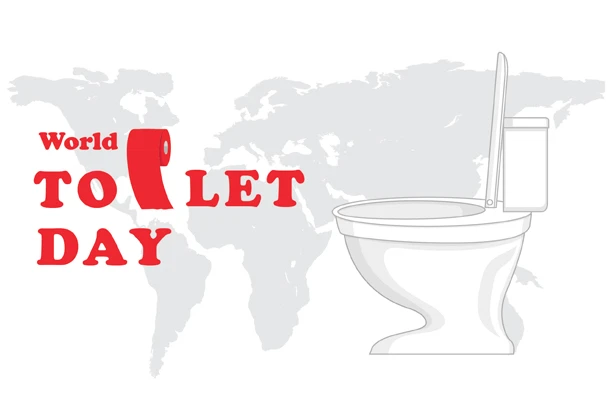The emphasis of World Toilet Day in 2022 is the harm that the sanitation crisis is causing to groundwater.
Since 2013, this holiday has been observed every year to honour toilets and bring attention to the 3.6 billion people who lack access to properly maintained sanitation. SDG 6: Sanitation and access to water for everyone by 2030 is about taking action to address the global sanitation challenge.
Insufficient sanitation systems spread human waste into rivers, lakes, and soil, contaminating underground water resources, according to the 2022 campaign “Making the invisible visible.” However, it appears that this issue is hidden. It’s hidden because it takes place underground. Because it occurs in the poorest and most marginalised communities, it is invisible.
Groundwater is the planet’s main source of freshwater. It supports drinking water supplies, sanitization systems, ecosystems, agriculture, industry, and industry. As global warming worsens and the population grows, groundwater is becoming increasingly important for human survival.
World Toilet Day 2022’s basic takeaway is that good sanitation practices protect groundwater from contamination by human waste. The provision of safe restrooms for all by 2030 is SDG 6.2, which the world is still a long way from reaching.
The campaign demands that governments move four times as quickly in order to assure that SDG 6.2 is finished on schedule. To protect this essential water resource, policymakers are urged to properly grasp the link between sanitation and groundwater in their policies.
How do toilets protect our health?
4.2 billion people lack access to properly run sanitation systems. Instead, they frequently use subpar, unreliable restrooms or engage in open defecation. Diseases that are lethal and chronic are spread by untreated human waste that is released into the environment. The ability to practise good hygiene, along with access to facilities and sustainable sanitation systems, is a powerful barrier against COVID-19 and other disease outbreaks in the future.
What does a sustainable sanitation system look like?
A toilet that efficiently collects human waste in a secure, easily accessible, and respectable environment is the first step towards sustainable sanitation.
The garbage is then placed in a tank where it can be later emptied by a collection agency or piped away. Treatment and secure disposal come next. Reusing human waste safely can cut water use, reduce greenhouse gas emissions and collect them for energy production, and give farmers a consistent source of water and nutrients.
As a result, World Toilet Day promotes sanitation and emphasises the need for everyone to have access to a clean bathroom for good health. Sanitation is a human right, and focusing on sanitation is essential to escaping poverty.

